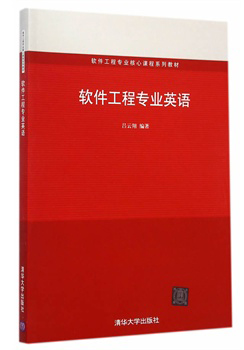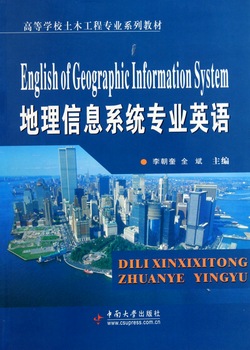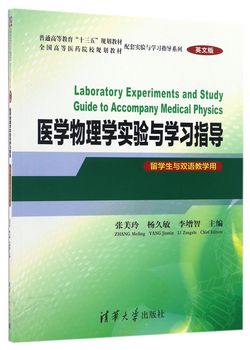- 电子工业出版社
- 9787121309205
- 1-1
- 294732
- 16开
- 2017-02
- 304
- 通信工程
- 本科 研究生(硕士、EMBA、MBA、MPA、博士)
Chapter 1 Discrete Sequences and Systems 1
1.1 Discrete Sequences and Their Notation 1
1.1.1 Discrete-time Signals 2
1.1.2 Frequently Used Discrete Sequences 7
1.2 Signal Amplitude, Magnitude, Power 9
1.3 Signal Processing Operational Symbols 10
1.4 Introduction to Discrete Linear Time-Invariant Systems 12
1.5 Discrete Linear Systems 12
1.5.1 Example of a Linear System 12
1.5.2 Example of a Nonlinear System 14
1.6 Time-Invariant Systems 16
1.6.1 Example of a Time-Invariant System 16
1.7 The Commutative Property of Linear Time-Invariant Systems 17
1.8 The Causality Property of Linear Time-Invariant Systems 18
1.9 The Stability Property of Linear Time-Invariant Systems 18
1.10 Analyzing Linear Time-Invariant Systems 19
1.11 Problems 20
1.12 MATLAB Applications 22
1.12.1 Applications 22
1.12.2 Examples 23
1.12.3 Exercises 24
Chapter 2 Periodic Sampling 25
2.1 Aliasing: Signal Ambiguity in the Frequency Domain 25
2.2 Sampling Low-Pass Signals 29
2.3 A Generic Description of Discrete Convolution 32
2.3.1 Discrete Convolution in the Time Domain 33
2.3.2 The Convolution Theorem 36
2.3.3 Applying the Convolution Theorem 39
2.4 Problems 42
2.5 Matlab Applications 43
2.5.1 Applications 43
2.5.2 Examples 44
2.5.3 Exercises 46
Chapter 3 Z-Transform 47
3.1 The z-Transform 47
3.1.1 Poles and Zeros on the z-Plane and Stability 49
3.1.2 The ROC of z-Transform 50
3.1.3 The Properties of z-Transform 53
3.2 The Inverse z-Transform 55
3.2.1 General Expression of Inverse z-Transform 55
3.2.2 Inverse z-Transform by Partial-Fraction Expansion 58
3.3 Problems 61
3.4 MATLAB Applications 63
3.4.1 Applications 63
3.4.2 Examples 64
3.4.3 Exercises 67
Chapter 4 The Discrete Fourier Transform 68
4.1 Interpreting the DFT 69
4.2 Understanding the DFT Equation 71
4.2.1 DFT Example 1 74
4.3 DFT Properties 81
4.3.1 DFT Symmetry 81
4.3.2 DFT Linearity 83
4.3.3 DFT Magnitudes 83
4.3.4 DFT Frequency Axis 84
4.3.5 DFT Shifting Theorem 85
4.4 Inverse DFT 87
4.5 DFT Leakage 88
4.6 Windows 94
4.7 DFT Resolution, Zero Padding, and Frequency-Domain Sampling 101
4.8 Frequency Response 104
4.9 Problems 106
4.10 Matlab Applications 107
4.10.1 Applications 107
4.10.2 Examples 108
4.10.3 Exercises 111
Chapter 5 The Fast Fourier Transform 112
5.1 Relationship of the FFT to the DFT 112
5.2 FFT Alogrithm 113
5.3 Derivation of the Radix-2 FFT Algorithm 114
5.4 FFT Input/Output Data Index Bit Reversal 120
5.5 Radix-2 FFT Butterfly Structures 121
5.6 Efficiently Performing the FFT of Real Sequences 127
5.6.1 Performing Two N-Point Real FFTs 127
5.6.2 Performing a 2N-Point Real FFT 133
5.7 Discrete Convolution using FFT 137
5.7.1 Overlap-added 138
5.7.2 Overlap-saved 138
5.8 IFFT Algorithm 140
5.9 Problems 143
5.10 Matlab Applications 144
5.10.1 Applications 144
5.10.2 Examples 144
5.10.3 Exercises 146
Chapter 6 Filter Structure 147
6.1 Block Structure 147
6.2 Mason and Transpose Theorem 149
6.2.1 Mason誷 Rule 149
6.2.2 Transpose Theorem 150
6.3 Example of Filter Structures 151
6.3.1 IIR Filter Structure 151
6.3.2 FIR Direct Structure 158
6.3.3 FIR Cascade Structure 158
6.4 Problems 159
6.5 Matlab Applications 162
6.5.1 Applications 162
6.5.2 Examples 163
6.5.3 Exercises 167
Chapter 7 Finite Impulse Response Filters 168
7.1 An Introduction to Finite Impulse Response (FIR) Filters 169
7.2 Properties of FIR Filters 172
7.2.1 Convolution in FIR Filters 172
7.2.2 Linear phase FIR Filter 181
7.2.3 Linear Phase FIR Filter Structure 188
7.2.4 FIR Filter Poles and Zeros 194
7.3 Low-Pass FIR Filter Design 196
7.3.1 Window Design Method 197
7.3.2 Windows Used in FIR Filter Design 204
7.3.3 Examples to Design Linear Phase Low-Pass FIR Filter 210
7.4 Examples to Design Other Types Linear Phase FIR Filter 215
7.5 Problems 220
7.6 Matlab Exercises 223
7.6.1 Applications
















